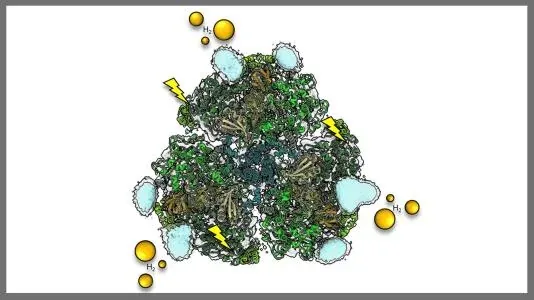
Uniting for a Healthier Future: The Role of AI in Bridging Health Disparities
2024-12-15
Author: Amelia
Introduction
The disparities in health outcomes around the globe are distressingly familiar. From varying life expectancies to unequal access to quality healthcare, the so-called “Health Gap” starkly amplifies social inequities. Individuals in low- to middle-income countries face alarmingly higher rates of premature death from preventable and manageable conditions compared to their counterparts in wealthier nations. Furthermore, within countries like the United States, communities of color—including non-Hispanic Black, American Indian, and Alaska Native populations—experience significantly higher rates of chronic diseases, including diabetes, heart disease, and obesity, as reported by the Centers for Disease Control and Prevention (CDC).
The Hidden Cost of Health Inequity
Closing these health gaps is not just a humanitarian responsibility but a necessity for economic stability. Current estimates suggest that health inequities inflict a burden of around $320 billion annually on the U.S. economy, a figure projected to escalate to $1 trillion by 2040 if left unaddressed. These staggering statistics reveal a critical need for comprehensive strategies that tackle the fundamental causes of health disparities rather than merely offering temporary solutions.
Harnessing AI for Healthcare Transformation
Artificial Intelligence (AI) is emerging as a transformative tool in health reform. Its capabilities in pattern recognition and personalized care present a promising avenue for advancing medical outcomes. AI applications are now able to detect diseases with higher accuracy and earlier than human doctors, allowing for individualized treatment plans that consider each patient's needs.
For instance, as of 2020, some AI models demonstrated superior accuracy in detecting breast cancer through mammograms than human radiologists under specific conditions. This innovation has since extended to other cancers as well. The proactive identification of high-risk individuals, particularly for chronic conditions like kidney disease, can lead to timely interventions that save lives and improve quality of living.
Beyond clinical diagnostics, AI's strength lies in its ability to analyze extensive datasets sourced from hospital records and socioeconomic conditions, revealing at-risk populations. This data-driven insight enables policymakers and healthcare organizations to allocate resources more judiciously. With this intelligence, targeted health initiatives, mobile clinics, and community education programs can be developed to effectively address health gaps.
The Four T’s of AI for Health Equity
The prospect of AI in healthcare is promising, but its success in bridging health disparities relies on four critical components: tailored solutions, fairness, targeted impact, and crucial integration with natural intelligence (NI).
1. **Tailored Solutions**: One-size-fits-all approaches fail to yield effective results in healthcare. AI must incorporate localized data—community-specific habits, pollution levels, and cultural attitudes—to create relevant solutions that resonate with the target populations.
2. **Fair Training and Testing**: AI systems often learn from historical data that may carry inherent biases. It’s crucial to ensure that AI algorithms are tested for fairness and refined to accurately represent diverse demographics. For example, Google's dermatology AI initiatives focus on inclusivity by training on a variety of skin tones to improve diagnostic accuracy for all.
3. **Targeted for Positive Outcomes**: AI should not simply mirror existing healthcare structures but should actively contribute to creating equitable healthcare systems. Monitoring environmental health data can allow for interventions that address local issues, promoting healthier communities through actionable data insights.
4. **Complementarity of AI and NI**: While AI brings technological prowess, it is essential to combine this with human intelligence—ethical judgment, empathy, and cultural awareness. This harmony ensures interventions are effective and respectful of community values.
The Micro to Meta Approach
Every level of society—from individual to global—plays a crucial role in addressing health disparities through the combination of AI and NI.
- **Micro (Individual)**: AI diagnostic tools can identify chronic disease markers, but healthcare professionals must implement these insights into culturally-sensitive care plans tailored to the individual’s lifestyle.
- **Meso (Community)**: Community leaders can harness AI's predictive capabilities to tackle local health challenges, such as air quality issues linking to higher asthma rates. By engaging residents, they can develop culturally relevant solutions that drive real change.
- **Macro (National)**: At the national level, AI can assist in analyzing socioeconomic and health data, helping to inform policies that prioritize equitable healthcare distribution and resource allocation.
- **Meta (Global)**: On a global scale, AI aids in disease surveillance and health resource management. Human experts can leverage this data to ensure equitable response strategies, keeping in mind the historical inequalities that shape global health dynamics.
A Collaborative Vision for Health Equity
Imagine a future where AI illuminates the obscured paths to better health, guided by the warmth and ethical focus of human intelligence. This cooperative relationship can empower individuals to take charge of their health while fostering community initiatives that address unique challenges.
By marrying AI's analytical strengths with human insight, we can build a more equitable health landscape. This isn’t just about closing the health gap; it’s about reimagining our approach to well-being, ensuring that everyone has the opportunity to lead a healthy, fulfilling life—no matter where they come from. The future of healthcare awaits—one where we transform potential into progress and every person gets a fair chance to thrive.









 Brasil (PT)
Brasil (PT)
 Canada (EN)
Canada (EN)
 Chile (ES)
Chile (ES)
 España (ES)
España (ES)
 France (FR)
France (FR)
 Hong Kong (EN)
Hong Kong (EN)
 Italia (IT)
Italia (IT)
 日本 (JA)
日本 (JA)
 Magyarország (HU)
Magyarország (HU)
 Norge (NO)
Norge (NO)
 Polska (PL)
Polska (PL)
 Schweiz (DE)
Schweiz (DE)
 Singapore (EN)
Singapore (EN)
 Sverige (SV)
Sverige (SV)
 Suomi (FI)
Suomi (FI)
 Türkiye (TR)
Türkiye (TR)